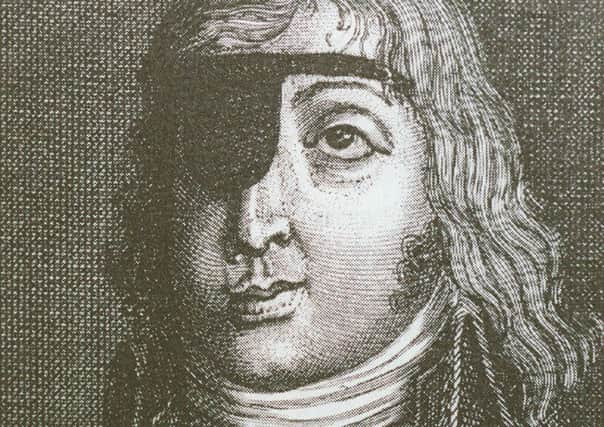Gerard Carrurthers: Hail hero of Scots democracy


Thomas Muir might be a “new” national icon in the making. This year is the 250th anniversary of his birth and, among other events in an extensive series of commemorations, the former First Minister, Alex Salmond,has recently lectured with great passion on the “father of Scottish democracy”.
Given the history, the excellent efforts of the Friends of Thomas Muir notwithstanding, Muir 250 is a rather curious appearance on Scotland’s cultural landscape. The young advocate cut his political teeth at the University of Glasgow in 1785, where he was vocal in demanding more openness in academic appointments, enhanced student power and greater accountability in institutional finances. One of three student leaders whom the senate found guilty of bad conduct, Muir was offered the chance to apologise but refused, voluntarily excluding himself and went off to study at the University of Edinburgh. There, reading law, he offered his legal services for free to those in the capital who could not otherwise afford them.
Advertisement
Hide AdAdvertisement
Hide AdIn matters of church affairs too, Muir engaged in controversy, in 1789 representing the Presbytery of Glasgow against the Reverend William McGill, whom the Presbytery believed undermined in his writings the divinity of Christ. Muir here stood for conservative Calvinism against the more “enlightened” or “moderate” part of the late 18th-century Scottish church.
A new portrait of Muir by Ken Currie, is entitled The Trials of Thomas Muir, and in it, wounded and stripped to the waist, Muir is Christ-like. This captures well the devout nature of the young lawyer. At his trial for “sedition” in 1793, Muir self-consciously drew on the passion of Jesus Christ. He was up against a government petrified by the threat of mob insurrection on the side of “democracy” after the revolution in France. He was pitted against a jury packed with loyalists of the status quo, witnesses coached and bribed and a judge, Lord Braxfield, who declared in his opening remarks that the British constitution was “perfect” and not to be challenged.
Muir decided to defend himself, because he knew he was participant, indeed, scapegoat in a show-trial. Newspapers and journals would carry his case to a wider public, and he consciously expressed the view that history would vindicate him. He knew that the court would not and, indeed, he was sentenced to 14 years transportation to Botany Bay. This was a shocking sentence, given that the charges were so undercooked, Muir being accused of recommending to weavers and artisans the reading of Thomas Paine’s The Rights of Man. This was true but only among a whole raft of library recommendations featuring various different ideological viewpoints.
After two years in Australia, Muir escaped aboard an American commercial vessel and his travels took him to the American Republic, Canada (as it is today) and South America, where he was involved in diplomatic toings and froings between the Spanish and the French over the legality of his status.
Sent back to Spain, his vessel was attacked by the Royal Navy, and his face was seriously disfigured. Apparently, hiding beneath a pile of corpses to evade British capture, Muir at last found sanctuary in revolutionary France. If this were a fictional Hollywood film, it would be seen as a strain on credulity. Muir, is claimed today as the “father of Scottish democracy”. His is a legacy to all of the modern Scottish people and to all its shades of faith and opinion.
• Gerard Carruthers is Francis Hutcheson Professor of Scottish Literature at the University of Glasgow. There will be a Thomas Muir Symposium at the University of Glasgow on 30 October and a concert on 20November. See www.thomasmuir.co.uk/